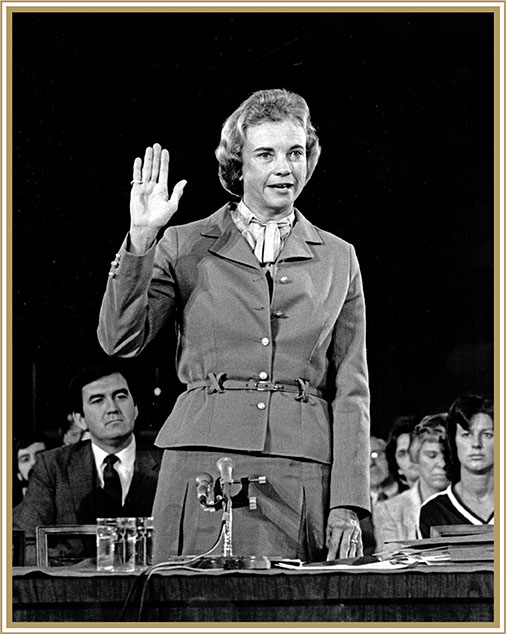
Sandra Day O’Connor, the first woman to serve on the United States Supreme Court, passed away today, leaving behind a legacy that reshaped the American legal landscape. O’Connor, appointed by President Ronald Reagan in 1981, broke barriers and set precedents, not just for women in law, but for the judiciary as a whole. Her impact on the Supreme Court and her role as a pioneering figure in American history cannot be overstated.
Early Life and Education Born on March 26, 1930, in El Paso, Texas, Sandra Day grew up on a cattle ranch in Arizona. Her early life was marked by hard work and a deep appreciation for the rugged individualism of the American West. She graduated magna cum laude from Stanford University and later from its law school, where she met her future husband, John O’Connor.
A Career of Firsts Sandra Day O’Connor’s legal career was a series of groundbreaking achievements. She served as an assistant attorney general in Arizona and was appointed to the Arizona State Senate in 1969, where she became the first woman to hold the position of Senate Majority Leader. Her judicial career began in 1975 when she was appointed to the Arizona State Court of Appeals.
Supreme Court Tenure In 1981, O’Connor made history as the first female Supreme Court Justice. Her tenure on the court was marked by her pragmatic approach to law and her often pivotal swing vote in key decisions. O’Connor’s jurisprudence was characterized by a commitment to moderation and a respect for precedent, making her a central figure in some of the most significant legal decisions of her time.
Key Decisions and Influence Justice O’Connor’s influence extended to several landmark rulings, including upholding the rights of women and minorities. She played a crucial role in decisions involving the death penalty, abortion rights, and affirmative action, often navigating complex legal and moral landscapes with a nuanced understanding of the law.
Retirement and Later Years O’Connor retired from the Supreme Court in 2006, but her post-retirement years remained active. She continued to advocate for judicial independence and civics education, emphasizing the importance of understanding the American legal system and government. Her book, “Lazy B: Growing up on a Cattle Ranch in the American Southwest,” provided a personal glimpse into the life and experiences that shaped her perspectives.
Legacy and Tributes As the nation mourns the loss of Sandra Day O’Connor, tributes pour in from across the political spectrum. Her legacy is not only that of a jurist but as a role model and trailblazer for women in all professional fields. O’Connor’s contributions to American law and society have cemented her place in history as a figure of resilience, wisdom, and integrity.
Conclusion Sandra Day O’Connor’s passing marks the end of an era but her legacy endures. As the first woman to sit on the highest court in the land, she paved the way for future generations of women in law and beyond. Her balanced approach to justice and her remarkable career continue to inspire and influence the legal landscape of America.
Sandra Day O’Connor’s life and career will be remembered as a testament to the power of determination, intellect, and a commitment to public service. Her journey from a ranch in Arizona to the halls of the Supreme Court is a uniquely American story of success, serving as a beacon of possibility and progress for all.






